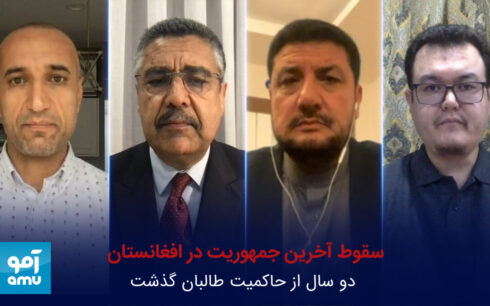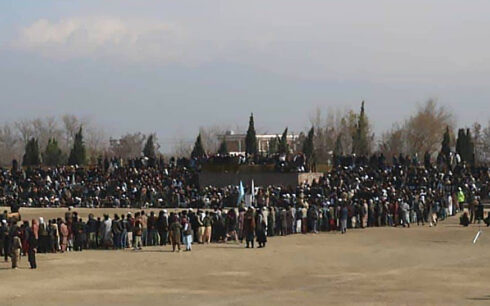Over the span of two years under Taliban rule, Afghanistan’s economy has undergone a tumultuous transformation, marked by a severe financial crisis and the paralysis of its banking system.
The United Nations Secretary General has sounded the alarm, deeming the humanitarian situation in Afghanistan as the world’s most extensive crisis of its kind. The poverty rate in the country has surged to a staggering 97 percent, according to the UN’s assessment.
A recent report by the United Nations reveals that Afghanistan has experienced a significant economic collapse over the past two years, causing the nation’s decade-long economic growth to plummet to its initial state.
The turning point was the Taliban’s re-entry into Afghanistan presidential palace on August 15, 2021. As the Taliban took control, people’s bank deposits were frozen, leading to thousands forming lines outside commercial banks the following day to retrieve their funds.
The influx of people seeking to withdraw money placed immense strain on commercial banks, prompting the Taliban-administered central bank to impose weekly withdrawal limits. Adding to the economic woes, sanctions were levied on Afghanistan’s banks, while prominent money transfer services like Western Union and MoneyGram suspended their operations in the country.
By November 22, 2021, the United Nations issued a stark warning, predicting a looming collapse of Afghanistan’s banking system in the coming months.
Since the Taliban’s takeover, Afghanistan’s GDP has plummeted by 35%, and per capita income has shrunk by 28% as of the end of 2022. Projections from the United Nations Development Program indicate that if aid is reduced by 30% in 2023 due to Taliban restrictions, per capita income could further plummet from $512 per year to $332.
The decline in annual income has been palpable since the Taliban’s takeover, with per capita income dropping to $356 in 2021, dipping below that level in 2022, and forecasted to hit $332 in 2023.
Sima, 26, serves as the sole guardian for her four children after her husband fell victim to a Taliban attack on the American consulate in Herat in 2012. She reflected on how the Taliban’s restrictive policies have forced her into dire economic straits, resulting in nights of hunger and a precarious financial state.
The Taliban introduced their inaugural budget in 2022 (1401 solar year). The budget ceiling was set at 231 billion afghanis, and the development budget plummeted to less than 28 billion afghanis—a significant drop from the prior year. The transparency around budget allocations remains limited.
The United Nations Development Program estimates that the number of Afghans living below the poverty line escalated from 19 million in 2020 to 34 million. The World Food Program has emphasized that nearly all Afghanistan citizens require assistance in light of the Taliban’s rule.
In the past two years, people’s ability of buying goods and food has declined. Laili, a resident of Herat, attempted to improve her circumstances by resorting to smuggling in Iran, but her efforts were in vain.
The Taliban’s takeover has also engendered significant unemployment, including the displacement of 350,000 Afghan security personnel. Women who were active within government institutions suddenly found themselves excluded from the workforce. In December 2022, the Taliban issued a decree halting the involvement of women in non-governmental organizations, leading to the cessation of operations by 150 NGOs and the loss of hundreds of jobs.
The United Nations has expressed deep concern over the detrimental impact of restrictions on women’s work, estimating losses exceeding one billion dollars for the Afghan economy. These policies are projected to cause a five percent drop in the nation’s GDP.
Antonio Guterres, Secretary General of the United Nations, has stressed the integral role of women in Afghanistan’s economy, asserting that 80 percent of the nation’s economic structure relies on their participation. He called upon the Taliban to honor their responsibilities toward women and girls and adhere to international human rights and humanitarian laws.
The intersection of rhetorical commitments and Taliban actions, particularly constraints on women’s employment, has hampered international aid to Afghanistan, pushing the economy to the precipice. In the current year, the World Food Program warns that a staggering 20 million people in Afghanistan are grappling with nightly hunger, with four million children and women at risk of malnutrition and mortality.





